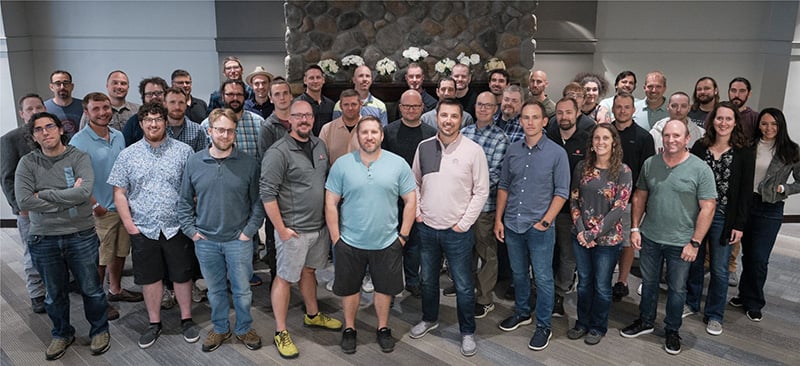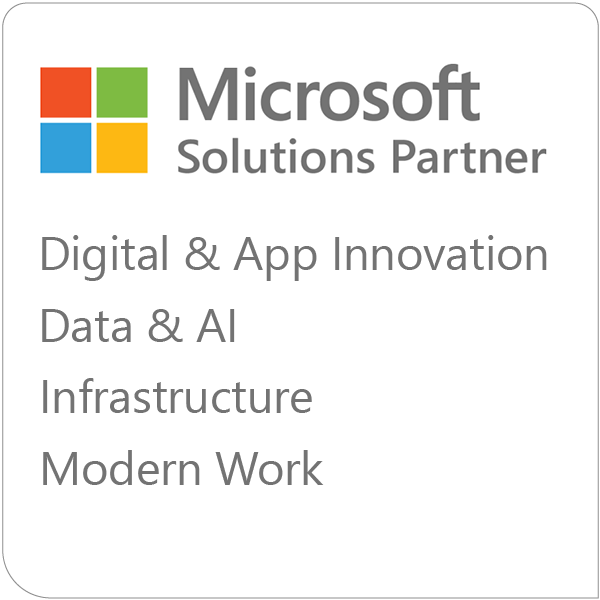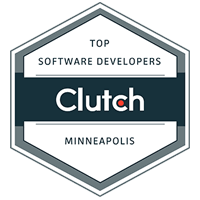In This Blog
- The Craft of Coding: From Lines to Layers
- The AI Shift: When Coding Challenges Became Obsolete
- Agents and Oversight: Why Prompting Alone Isn’t Enough
- From Coders to System Crafters
- Building the Right Environment
- The Power of Context for AI Agents
- Real-World Example: Jason Paff’s Environment-First Approach
- The Future of Software Craftsmanship
- Final Thoughts: The Craft Lives On
- FAQ
I stared at my screen, equal parts amazed and alarmed. I had just vibe-coded a solution to a code challenge that normally takes senior devs 3–4 hours to complete. I had done it in 10 minutes — and it passed 100% of our review checks. Software development is undeniably changing. The question on my mind is: what is it changing into?
The Craft of Coding: From Lines to Layers
I’ve been writing code for about 30 years and take great pride in the craft. The efficiencies of one data type over another, the time and space complexity of an algorithm, the vertical alignment of code blocks, and the readability that makes code self-documenting — these details have always mattered to me. While I did architecture and system design, writing the code was my passion. I created software one line at a time, with the precision and art of a master stonemason.
The AI Shift: When Coding Challenges Became Obsolete
You can learn a lot from seeing someone’s code. That’s why Emergent Software has always insisted on real code from every candidate. We used to start with a short algorithm challenge, 20–30 minutes of work as a quick quality gate. Then came ChatGPT. I ran our challenge through and it wrote a correct solution in 10 seconds. We had to ask ourselves: are candidates “cheating” if they use AI? In the end, we realized the question itself missed the point. Writing simple algorithms with known ins and outs is now a job for AI. Our craft is more than that, and we adjusted our process to reflect it.
Agents and Oversight: Why Prompting Alone Isn’t Enough
The models have only gotten better. Today we can use agents to create code across multiple files and layers with a single prompt. Some startups are already launching full applications this way, but I’ve been around long enough to know that quick prototypes pushed straight to production often turn into long-term nightmares. Agents without oversight aren’t the future.
Right now, building high-quality software with agents usually looks like this:
-
Write a strong prompt with lots of context
-
Wait for the agent to generate code
-
Review, debug, and patch until it works
Helpful? Often. Sustainable? Not really. Most developers I talk to don’t want to spend their days as prompt engineers and quality control in an AI factory. That isn’t the future of our profession.
From Coders to System Crafters
And yet — this doesn’t feel like the end of our craft. If anything, it feels like the beginning of a new one.
I see a new role taking shape: builders of the worlds where both developers and agents can create together. Instead of laying bricks line by line, we’ll be shaping environments — the standards, the patterns, the scaffolds — that make great software possible at scale.
Building the Right Environment
In this future, developers focus less on typing out code and more on designing the environment that produces it. That environment includes:
-
Standards and Architecture: MPC servers enforce both company-wide and project-specific standards, while architecture diagrams and decision records capture the reasoning behind choices.
-
Reusable Scaffolds: Templates for IaC, components, libraries, and coding patterns give agents a consistent, reliable starting point.
-
Feedback Loops: CI/CD gates, centralized logging, and observability ensure agents get the context they need — and developers see when the system drifts off course.
These pieces are both human-readable and AI-navigable. When something goes wrong, the fix isn’t patching lines of code — it’s tuning the environment so the whole system produces better output.
The Power of Context for AI Agents
The focus shifts from writing code to building the systems that generate it. That’s system crafting.
AI coding agents thrive on context. Without it, they guess and often wander off course. With it, they accelerate development while staying aligned. The more defined the environment, the more successful the agents.
Real-World Example: Jason Paff’s Environment-First Approach
At a recent internal talk shop, one of our developers, Jason Paff, demonstrated exactly this approach. Using Aider alongside MPC servers and local templates, he and his team defined a world for agents to work within. The results were striking: our QA team reached out to say how impressed they were with the speed and consistency of his bug fixes. The secret wasn’t just the agent — it was the environment he built around it.
The Future of Software Craftsmanship
This is where I see the future of our craft. We’ll do more than just clean up after AI agents. We’ll solve problems by creating the environments in which humans and agents build together.
The tools have changed, but the craft isn’t gone. Software development has always been about evolution — from machine code to high-level languages, from manual deployments to CI/CD. This is the next level of abstraction: system crafting.
Final Thoughts: The Craft Lives On
We won’t be reduced to prompters in an AI factory. We’ll be the ones designing the environments where great software can emerge — faster, safer, and at higher quality than ever before.
From bricklayers to world builders: the craft lives on.
FAQ
1. Will AI agents eventually replace software developers?
Not in the way some people fear. AI is a powerful tool, but it isn’t a substitute for human judgment, creativity, or domain expertise. AI agents are exceptional at pattern matching, processing vast amounts of data, and generating code quickly. However, they lack contextual understanding, critical thinking, and a sense of responsibility for outcomes.
Think of how technology evolved in other industries. The introduction of computer-aided design didn’t eliminate architects; it made them faster and more precise. Similarly, developers will continue to be the decision-makers who design systems, validate solutions, and ensure quality and security.
Rather than replacing developers, AI will free them from repetitive, time-consuming tasks, allowing them to focus on higher-level design, system optimization, and innovation.
2. What skills should developers focus on in this new environment?
As AI becomes more integrated into the workflow, developers will need a combination of technical, strategic, and soft skills to thrive:
-
System Crafting: Design environments where humans and AI agents can build software together.
-
Prompt Engineering: Write context-rich prompts that guide agents effectively without over-reliance.
-
Architecture & Documentation: Establish clear standards, diagrams, and decision records for scalable development.
-
Reusable Scaffolds: Provide templates and libraries that give agents reliable starting points for consistent output.
-
Observability & Feedback: Implement CI/CD gates, logging, and monitoring to detect drift and improve performance.
-
AI Collaboration: Partner with agents by tuning systems rather than patching code.
-
Mentorship & Environment Design: Shape the overall development ecosystem instead of focusing only on individual lines of code.
Soft skills like adaptability, problem-solving, and curiosity will be just as valuable. Developers who can think strategically, question assumptions, and quickly adapt to new tools will thrive in this next era of software creation.
3. How can organizations integrate AI into their software development practices?
Organizations that want to embrace this evolution need to go beyond simply giving developers access to AI tools. They need to create intentional frameworks that enable sustainable and safe adoption. This includes:
-
Defining Clear Standards: Establishing organization-wide guidelines for architecture, security, and quality to ensure consistency.
-
Investing in Training: Helping developers understand how to effectively collaborate with AI agents and integrate them into workflows.
-
Creating Feedback Loops: Building CI/CD pipelines, automated testing, and observability tools that provide real-time context and error detection.
-
Encouraging Innovation: Allowing teams to experiment with new AI-driven processes without fear of failure, so they can discover what works best.
The companies that will benefit most from AI are those that treat AI as a partner and intentionally design systems that enhance — not replace — human expertise.
4. How will this evolution impact new developers entering the field?
For new developers, the entry point to software development is changing — but in a way that can accelerate growth. While they will still need to understand programming fundamentals and data structures, they’ll also need to learn how to collaborate with AI from the start.
This means mastering skills like:
-
Crafting clear, detailed prompts that guide AI toward useful results.
-
Reviewing and debugging AI-generated code to ensure it meets quality standards.
-
Understanding architecture and design principles earlier in their careers.
In some ways, this evolution lowers the barrier to entry for beginners, allowing them to build functional applications much faster. But it also raises the bar for critical thinking and system-level understanding, pushing developers to think bigger and more strategically much earlier in their careers.
5. What’s the long-term vision for AI in software development?
In the long run, AI will become a deeply embedded collaborator across the entire software lifecycle. We’re moving toward a future where AI agents are not just generating snippets of code but actively participating in architecture design, testing, deployment, and even performance optimization.
Imagine a world where AI agents understand your company’s systems, standards, and priorities — and can autonomously propose improvements, flag inefficiencies, and implement fixes within guardrails set by humans.
But no matter how advanced the technology becomes, the role of the human developer will remain central. Developers will be the visionaries and system architects, ensuring that AI is used responsibly, ethically, and in ways that align with organizational values and long-term goals.






